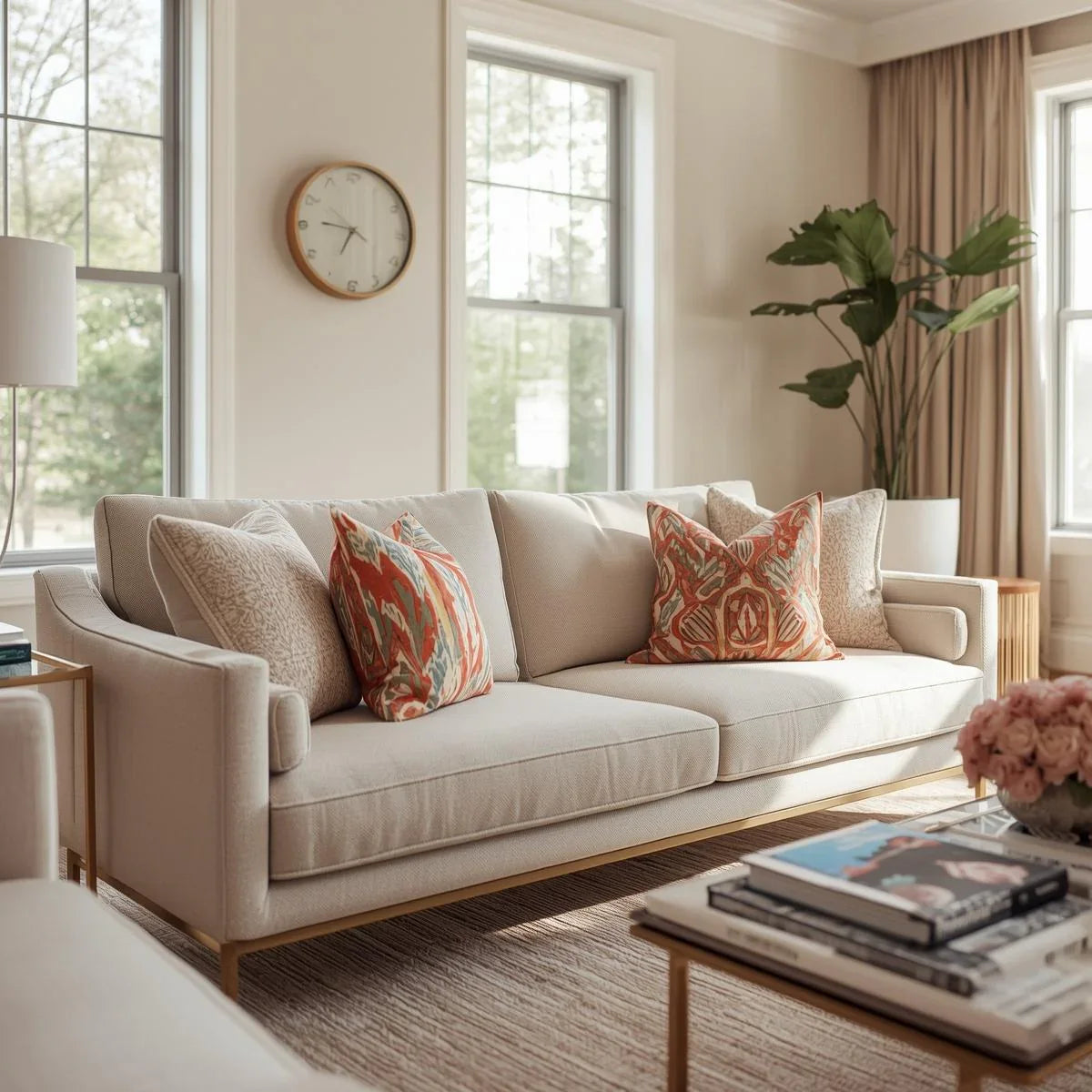You don't always need a full-scale makeover of your home or deep pockets. What one needs to do is just make one minor change-textured pillow covers. Simply that, yes. They can be called the secret sauce of interior decor. Tactile, inviting, and eye-pleasing, they are enough to turn a boring room into a chic hideaway. The best is even all this! It is cheap and fast. According to New York-based interior designer Bobby Berk who has an eye on balance and warmth in modern houses, texture takes a soul into a room.

Whether you want to dress up your living room to impress or you are making the place over to appease yourself, the textured throw pillow covers are your quick route to high-end living without high-end costs.
Why Texture Is the Secret Spice Your Design Should Have
Or put it plainly, anyone can purchase a pillow throw. However, when you choose textured throw pillows, you are bringing in depths of interest and accommodation. It sort of feels like a regular latte to a vanilla caramel macchiato, same ground, just so much fancier.
A 2024 report by Houzz showed that more than 67 percent of U.S. homeowners leaned toward combining textiles and textures to give a room a more customized and personal effect. Here, the textured pillows come to the limelight. Chunkier knits, line ridges, faux fur, or embroidered cotton, all those touches make the entire experience even better.
The texture cannot simply be viewed, but it has to be touched. It adds more humanity to a room.” Leanne Ford is, American personality and interior designer at HGTV.
Design Tips: Learning to Mix and Match
Do you have a dream to make an area that has the feel of the pages of a magazine? The following tips are simple to follow in the beginning:
• Layer Textures: A textured white pillow (the white one) will look great paired with a shaggy wonder pillow (the chunky white pillow).
• Seasonal swaps: wear light fabrics such as linens in summer. During the winter, substitute with faux fur or velvet.
• Mix and Match Patio Sets: To create a contrasted effect, add some texture on your outdoor pieces of furniture with textural pillows to make them stand out, mix wicker, metal, and use of textile to have a curated creation.
• Bedroom & Dining Spaces: The textured cushions can complement mix and match bedroom sets or can be used to add character to a mix and match dining room table and chairs with the use of textured runners and seat cushions.

The strength of the White Textured Pillow
A decor textured white pillow not only decorates, but it also shifts gears. Why? It lights up a room, fits in any palette, and shouts minimalistic class. It is your ultimate neutral pal that you can wear when overlaying with bold colors or when you are keeping it soft.
And the textured throw pillows should not be limited to the sofa only. Puta them in beds, or in benches, or in reading corners. You would not believe how a matter of seconds can change the atmosphere of a whole room.
Where to Find the Look (Hint: This Is Where You Can Get It at Fabdivine)
Wondering how to get the designer-chic at less than designer cost? Here, you have a one-stop shop for all well-made, quality home decor. Whether it is in the form of pillow covers and curtains, as well as lampshades, table runners, and so on, all of these are painted in a manner that would bring you a space that you can call your own.
All products are designed to integrate comfort with style, as you get a range that looks good and feels like home. Therefore, the next time you are feeling that your space is a bit of a bore, do not change everything. It is just a matter of touching on texture and the ingredient beyond the commonplace, the ordinary, that makes it extraordinary.
Time to improve your location? And begin with the unique line of textural pillow cases offered at Fabdivine, and fall in love with your home once again. Find out more at www.fabdivine.com
FAQs
Q1. What are textured pillow covers?
Textured pillow covers are attractive covers made with materials that have raised designs, weaves, or other tactile designs, adding complexity and attention to your pillows.
Q2. What materials are used for textured pillow covers?
Common materials include cotton, linen, velvet, chenille, wool, and blends. Some also feature additions like sewing or woven designs.



